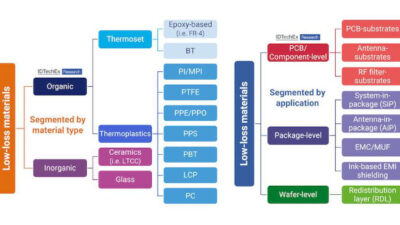A means of prioritizing voice and video data to address latency issues and provide good quality of service (QoS) is needed when transmitting voice or video data over a wireless medium.
The last three segments in this series have dealt with the basic methods of acquiring control of the wireless medium for transmission of data. However, we have only considered the transmission of data in an abstract sense. What if we need to transmit voice and video data over the network? This type of higher value data is very intolerant of latency in transmission. The arbitration process can exceed 300 ms end-to-end. On a properly operating network with adequate bandwidth, maximum latency should not exceed 150 ms for voice or video to ensure quality delivery. A means of prioritizing voice and video data to address the latency issues and provide good quality of service (QoS) is needed.
In the last segment we briefly touched on the concept of enhanced data channel access (EDCA), which is an enhancement of distributed coordination function (DCF) and is defined by IEEE 802.11e. Wireless multimedia (WMM) is a Wi-Fi alliance certification standard reflecting the IEEE 802.11e amendment, which requires all QoS stations to support EDCA.
EDCA operates in the same basic manner as DCF in attempting to gain control of the medium. EDCA improves this process by prioritizing traffic using four access categories (AC) by assigning priority tags in the frame header, which determine the class of service for transmission of that frame. The four ACs, in descending order of priority, are:
- AC_VO: Voice, highest priority; allows multiple and concurrent voice over IP (VoIP) calls with lowest latency
- AC_VI: Video; supports prioritized video traffic before other data traffic
- AC_BE: Best effort; supports non-QoS traffic and data not latency sensitive
- AC_BK: Background, lowest priority; traffic such as print jobs or file transfers.
For each AC, a specific method of EDCA is used to contend for a transmission opportunity (TXOP). This method is called the enhanced distributed channel access function (EDCAF), which altered several contention protocols used in DCF. Interframe spacing (IFS) is another altered protocol.
Instead of using a DCF interframe spacing (DIFS), an arbitration interframe spacing (AIFS) is used. Unlike DIFS, AIFS is not a set duration (DIFS = SIFS + 2 slot times). AIFS is determined by priority level in slot times + SIFS. The AIFS slot times are variable based on priority level; higher priority traffic uses fewer slot times, making the length of the AIFS shorter. Each AC uses a different number of slot times: AC_VO and AC_VI use two slot times, AC_BE uses three, and AC_BK uses seven. Obviously, the AC with the highest priority has the best chance of acquiring the medium.
Similarly, the random back-off timer and resulting contention window (CW) are also dependent on AC priority levels. Where the DCF CW varied from 0-1023 slot times regardless of the type of traffic, the EDCA CWs do vary. AC_VO CW is between 3-7, AC_VI is 7-15, and AC_BE and AC_BK are both 15-1023.
One important difference between DCF and QoS based random back-off timers is that DCF gives equal access to all traffic, while EDCA gives equal access in all traffic of a single AC. When two stations are transmitting data in the same AC, the operation is the same as DCF. However, if traffic is mixed among different ACs, then the EDCA contention algorithms operate to support higher priority traffic and maintain quality of service.
IEEE 802.11e introduced the concept of block acknowledgments. Recall that each unicast frame must be acknowledged to ensure error-free delivery. The station has to wait to receive individual acknowledgment frames after each transmission, a process that adds a lot of overhead and congestion to a WLAN. In 802.11n, block acknowledgments were made mandatory. This allowed stations to transmit large numbers of frames without waiting for individual acknowledgments.
This sequence of frames is called a "frame burst" or "contention-free burst (CFB)" and uses reduced IFS (RIFS) instead of SIFS to further enhance throughput for large transfers. Frame aggregation is also used to improve transfers; frames are aggregated, or linked together in the datalink layer (without using IFS) prior to transmission. Block acknowledgments are used to acknowledge aggregated frame transmissions.
Finally, the TXOP allows a station to retain control of the medium for a set period that is contention free. The station that successfully acquires the medium, called the TXOP holder, has unfettered access to the medium for the duration of the TXOP. A TXOP interval is 32µs, and each AC is configured for a different TXOP limit; this limit is the maximum time allowed for each AC when the medium is acquired. For AC_VO, the default value is 47 intervals, or 1504µs. The following table details the available TXOP limit values in intervals (microseconds):
| Access Category | DSSS | OFDM |
|---|---|---|
| AC_VO | 102 (3264) | 47 (1504) |
| AC_VI | 188 (6016) | 94 (3008) |
| AC_BE | 0 | 0 |
| AC_BK | 0 | 0 |
AC_BE and AC_BK are 0 by default because traffic at these priority levels is not, by definition, QoS traffic. It should be noted that while TXOP is a set duration, the transmitting station is not required to fill that duration with data. The TXOP is a contention-free period during which other stations permit no medium contention. When the TXOP expires, the medium is open for contention by all. Prioritization allows reservation of the channel to enhance the transmission of higher value information while reducing or eliminating collisions and data corruption.
– Daniel E. Capano, owner and president, Diversified Technical Services Inc. of Stamford, Conn., is a certified wireless network administrator (CWNA). He can be reached at [email protected]. Edited by Chris Vavra, production editor, CFE Media, Control Engineering, [email protected].
ONLINE extras
Home has other wireless tutorials from Capano on the following topics:
Carrier sense multiple access with collision avoidance
Carrier sense multiple access with collision detection
Medium arbitration
Upcoming Webcasts has wireless webcasts, some for PDH credit.
Control Engineering has a wireless page.



